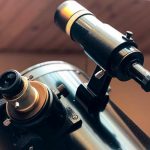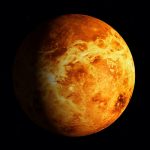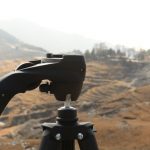Observing Yeast Under A Microscope
Most people typically see yeast as something you use when you bake bread or brew beer, but in truth, there are numerous kinds of yeast. In this article, we’ll be discussing observing yeast under a microscope. We’ll also talk about yeast in general terms, such as what is yeast? What is yeast’s purpose, where can you find yeast? How would you use yeast when you bake bread and make wine?
Yeast is actually a fungus and covers two subdivisions called Ascomycota and Basidiomycota. Yeast themselves are microorganisms called eukaryotic cells.
What Is The Average Size Of A Yeast Cell?
The typical yeast cell is approximately 3 to 4 micrometers in diameter. However, some yeast species are capable of growing to 40 micrometers.
Yeast plays a massive role in human lives across many different facets such as biology, food, medicines, and of course, our bodies.
There are currently over 1,500 known yeast species; in the article, we’ll discuss some prevalent yeast species and why we think they are helpful.

What Is Yeast?
Yeast is single-celled or unicellular fungi and reproduces asexually by budding. They survive by consuming sugars which creates fermentation of fruits, plants, and some plant by-products. Through the method of fermentation, this, in turn, produces alcohol and carbon dioxide. Fungi are also capable of producing infections.
Even though yeast can reproduce asexually by budding, they also utilize yeast sexual reproduction, and you can view these episodes through an optical microscope.
What Does Yeast Do?
Several of the 1,500 yeast species, such as baker’s yeast, brewer’s yeast, nutritional yeast, distiller’s yeast, and wine yeast, are helpful because humans use them to make baked goods and alcoholic drinks.
Not all yeasts are helpful in this way, and some yeast can cause unpleasant infections in humans, such as Candida yeast.
What Does Yeast Look Like Under A Microscope?
Yeast 400x magnification under a microscope, and you can plainly see the cell shape and arrangement.
You might also see some yeast cells reproducing at this high power, typically known as yeast cell budding.
Where Can You Find Yeast?
Because of the vast number of yeast species, you can find yeast in many habitats; however, there will always be one overriding factor; the availability of sugar and other nutrients yeast must have to survive.
Yeast cells cannot make their own food, so they survive by consuming organic substances such as sugar. Some of the more likely places you’ll find yeast are flowers, fruits, plants, soil, and deep-sea habitats.
When animals have yeast infections, they are typically found on the skin or in the intestines.
Yeast Sexual Reproduction
Yeast reproduces asexually by binary fission and budding; another type of fungi called dimorphic yeast cells grows as hyphae or yeast. Yeast under a microscope will appear as circular or egg-shaped, but hyphae have long tails.
Sometimes under certain stressful situations, yeast cells might sexually reproduce, which can create yeast spores.
Yeast Cell Budding
Typical vegetative growth in yeast is mitotic asexual reproduction: budding—a small daughter cell forms on the parent cell. The nucleus of the parent cell splits into a daughter nucleus and moves to the daughter cell. Once the bud is fully grown, it separates from the parent cell and creates a new cell.

Binary Fission
There is another type of yeast asexual reproduction called binary fission. The yeast cell elongates, and the yeast nucleus divides into two daughter nuclei; the cells are still attached to the parent at this stage. The cell creates a new plasma membrane to create two new cells before leaving the parent cell.
Observing Yeast Under A Microscope
Yeast cells are eukaryotic organisms with a diameter of only 5 to 10 micrometers, are exceptionally small, so high magnification optical microscopes are necessary to observe yeast cells.
For viewing yeast cells, the ideal settings on your microscope should be a numerical aperture of at least 1.4 and the objective lens set at a magnification of between 60x and 100x.
Yeast Microscopy Techniques
You will be able to view yeast if you choose either bright field or fluorescence microscopy techniques. In fact, if you use a bright field microscope, for example, a compound microscope at high magnification, let’s say 1000x, you can view yeast and buds.
Bright field microscopy will also allow you to view the yeast fermentation process using a sugar solution. In addition, it’s possible to view yeast’s reproduction through budding.
When you choose to use a fluorescent microscope, you will identify the cell organelles inside yeast, including their intercellular distribution. The cell organelles include the yeast vacuoles, yeast nucleus, mitochondria, yeast cell wall, and endoplasmic reticulum.
Yeast Under The Microscope
Materials needed to prepare a yeast slide:
- Yeast cake (contains Saccharomyces Cerevisiae, a sugar eating fungus)
- A cup of warm water
- A Mixing bowl
- Spoon
- Glass slides
- Covers
- Pipette or a medicine dropper
Yeast Slide Preparation
Take roughly 25% of the yeast cake, add water, and mix. Once you have a paste-like texture add up to one pint of water to have a diluted solution, completely dissolve a tablespoon of sugar in the solution.
Using the pipette or medicine dropper, whichever you prefer, place a drop of the solution onto your yeast slide. Using the slide cover, place it directly on top of the slide; if any solution seeps out under the slide, wipe it off with a dry cloth.
Your microscope should be set up with the highest power objective lens at 60x or 100x; using the ocular lens, your compounded magnification will be either 600x or 1000x.
Place the yeast slide on the microscope stage, ready to view.
Final Thoughts
Yeast is a microorganism that comes in many forms; we utilize some to bake and use for different practical purposes, while other yeast forms are active in nature.
Other types of yeast can be unhealthy for humans and animals.
Yeast is also incredibly useful in the study of genetics and DNA. Yeast is not particularly easy to observe under a microscope, but many scientists and medical researchers observe yeast to learn crucial cellular processes.


















